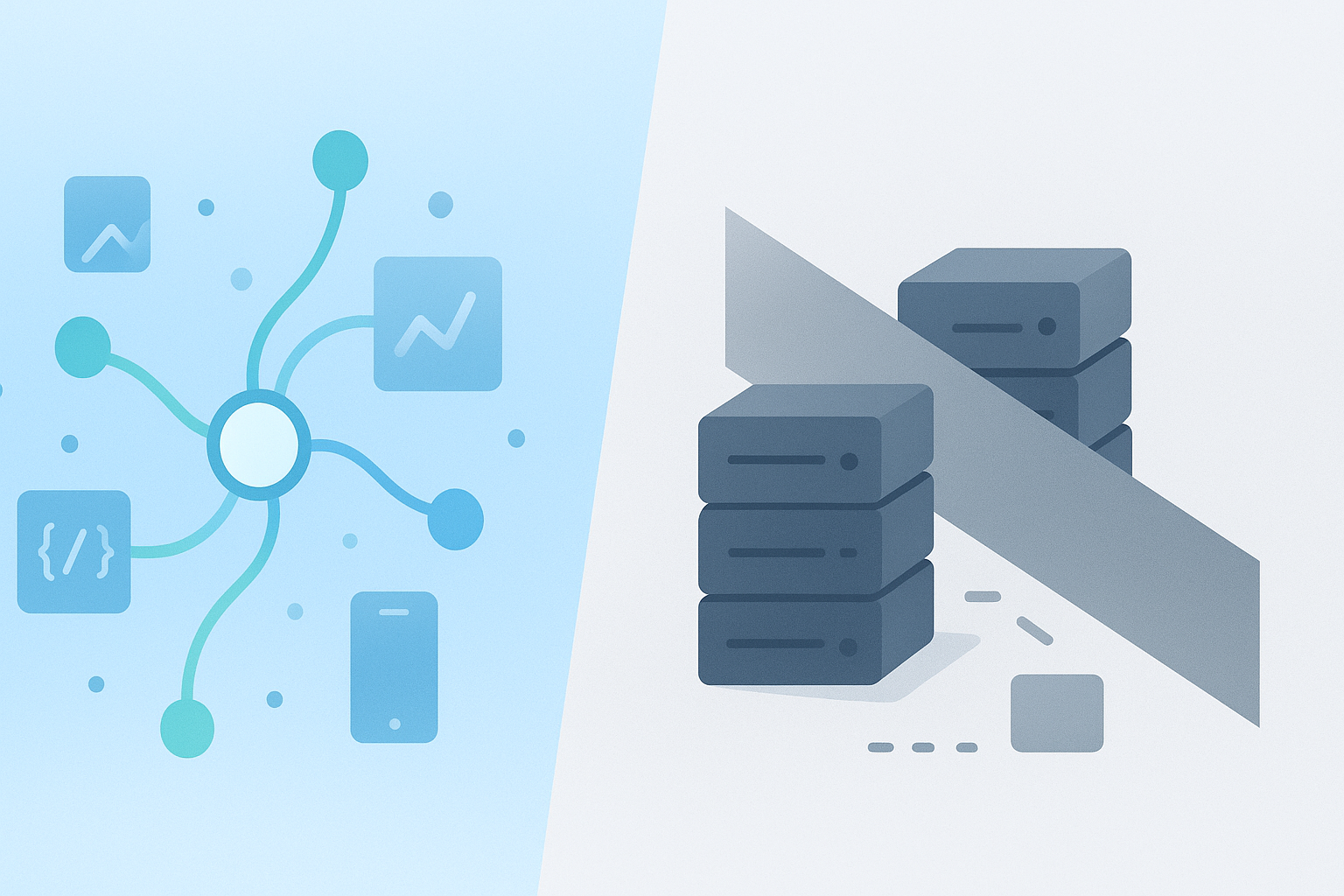
When Uber launched, they didn't build their own mapping system. When Stripe started, they didn't create their own banking infrastructure. When Instagram began, they didn't develop their own photo storage solution.
But every trading card app still starts by rebuilding the same databases from scratch.
This isn't just inefficient—it's actively preventing entire categories of innovation that could transform how we collect, trade, and think about cards. While other industries race ahead by building on shared infrastructure, the trading card world remains stuck reinventing the wheel, over and over again.
The Apps That Don't Exist
The innovation gap becomes clear when you start listing the applications that should exist but don't.
The Smart Portfolio Analyzer: An app that tracks your collection across multiple platforms, analyzes market trends from every available data source, and suggests portfolio optimizations. "You're overweight in 1990s basketball—consider diversifying into vintage football." It can't exist because the data is scattered across incompatible silos.
The Universal Price Tracker: Real-time alerts when cards matching your want list appear below market value anywhere online. eBay, COMC, Facebook groups, Discord servers—all monitored by a single intelligent system. Impossible today because each platform's data is locked away.
The Authentication Assistant: An AI-powered app that analyzes card photos against databases of known authentic examples, counterfeits, and condition standards from every major grading service. The expertise exists across multiple platforms, but no single app can access it all.
The Market Timing Tool: Predictive analytics that combine sales data, social media sentiment, sports performance, and seasonal trends to suggest optimal buying and selling windows. The components exist—they just can't talk to each other.
The Collection Insurance Calculator: An app that automatically values your entire collection using real-time market data, generates insurance documentation, and updates valuations as markets shift. Insurance companies would love this, collectors need it, but it requires data from dozens of pricing sources that don't share information.
The Social Trading Network: Think StockTwits for trading cards—real-time discussions tied to specific cards with live price data, recent sales, and market sentiment. Users could follow successful collectors' moves and get notifications when cards in their wheelhouse become active. The social features are easy to build; accessing the card data isn't.
The Rookie Predictor: An AI system that analyzes sports performance data, social media buzz, and historical parallels to predict which rookie cards might appreciate. Combines sports statistics APIs with card market data—except the card market data isn't available via API.
The Break Investment Tracker: Calculate expected value of card breaks by combining case odds, current market prices, and historical break results. Track your break performance over time and identify which products offer the best ROI. Box break sites have the odds, pricing sites have the values, but they don't connect.
The Barrier Wall
These aren't theoretical applications—they're obvious solutions to problems collectors face every day. So why don't they exist?
The answer isn't lack of demand or technical complexity. Developers build more sophisticated applications in other industries routinely. The problem is that every trading card app idea hits the same wall: data acquisition.
Want to build the Smart Portfolio Analyzer? First, spend six months figuring out how to get pricing data from multiple sources, condition standards from grading services, and market trends from various platforms. Want to create the Authentication Assistant? Start by somehow accessing reference databases from PSA, BGS, SGC, and other authentication services that don't offer public APIs.
By the time you've solved the data problem—if you can solve it—you've burned through your development budget and timeline. Most developers give up. The few who persist end up with inferior versions that work with limited data sources, or they pivot to building yet another collection tracker because that's what's actually buildable.
The innovation doesn't happen because the foundation doesn't exist. It's like trying to build skyscrapers when you're not allowed to use concrete.
What Innovation Looks Like When Data Flows
To understand what we're missing, look at what happened in other industries when data became accessible.
When Google opened their Maps API in 2005, it didn't just enable navigation apps—it spawned entire categories of innovation nobody had imagined. Real estate sites with interactive maps, fitness trackers with route visualization, food delivery with live driver tracking, dating apps with location matching. The infrastructure enabled creativity that went far beyond the original use case.
When financial APIs emerged, we didn't just get better banking apps—we got Mint for personal finance, Robinhood for democratized investing, payment processors like Square that revolutionized small business commerce. Each built on accessible financial data to solve problems the original banks never considered.
Even in adjacent collectibles markets, this pattern holds. When StockX made sneaker market data accessible, it enabled price comparison tools, authentication services, and investment tracking apps that transformed how people think about sneaker collecting.
The Network Effect We're Missing
The real loss isn't just individual missing applications—it's how innovation compounds when data flows freely.
In open ecosystems, each breakthrough enables the next. When one developer solves authentication, others can build on that foundation. When someone creates market analysis tools, others can incorporate those insights into portfolio management. When pricing data becomes accessible, dozens of developers find creative new ways to use it.
This is how transformative innovation happens: not through isolated genius, but through collective building. One person's side project becomes another's core feature. A simple API endpoint spawns applications nobody imagined.
But data silos break this chain reaction. Without shared foundations, every developer starts from zero. Brilliant solutions remain locked inside single applications where they can't inspire the next wave of innovation. The collective intelligence of the community never gets unleashed because the building blocks aren't available to build with.
We're not just missing apps—we're missing the exponential creativity that emerges when innovators can stand on each other's shoulders instead of starting from scratch every time.
Coming Up
So why do platforms keep their data locked away if it's holding back so much innovation? Next week, we'll explore the business and technical reasons behind these data silos—and why those reasons are becoming less valid every day.
This is the third post in my series exploring trading card data problems. Catch up on part 1: "The Data Problem Every Card App Faces" and part 2: "The Real Cost of Trading Card Data Silos".
Which of these missing applications would you most want to see built? Or what trading card innovation am I missing? Share your thoughts in the comments below.
 Josh Harrison is the founder of CardTechie and a software engineering manager with over 20 years of experience building scalable applications. As a lifelong trading card collector and developer, he's experienced both sides of the data problem firsthand—spending countless hours manually entering card information as a collector, and facing the challenge of sourcing reliable card data as a developer. Josh is currently working on solutions to make trading card data more accessible and interoperable across the ecosystem. Follow his work at
Josh Harrison is the founder of CardTechie and a software engineering manager with over 20 years of experience building scalable applications. As a lifelong trading card collector and developer, he's experienced both sides of the data problem firsthand—spending countless hours manually entering card information as a collector, and facing the challenge of sourcing reliable card data as a developer. Josh is currently working on solutions to make trading card data more accessible and interoperable across the ecosystem. Follow his work at